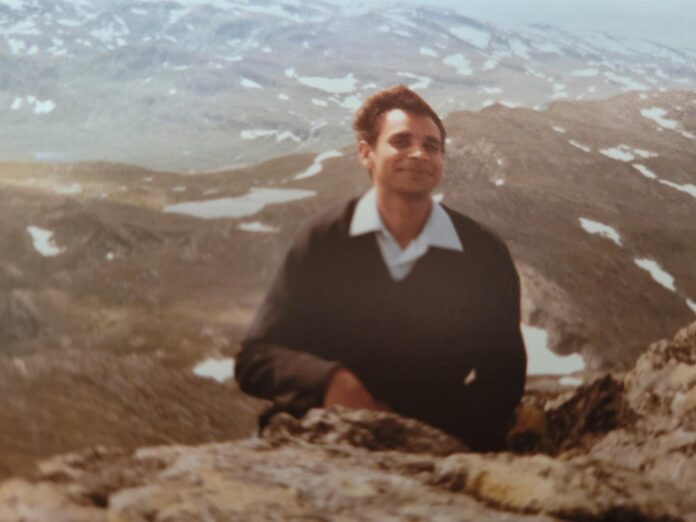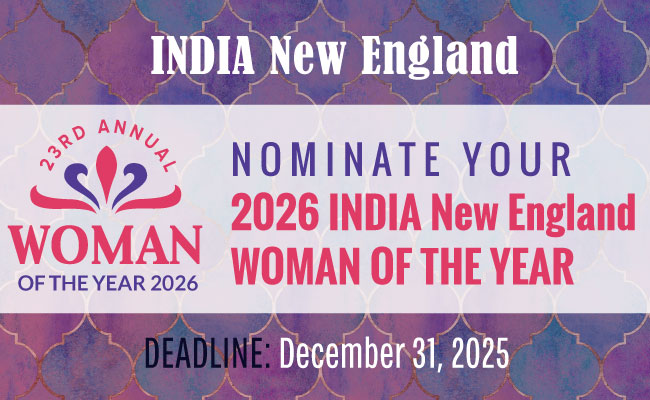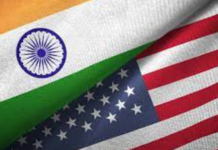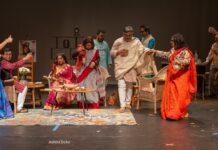By Upendra Mishra
BOSTON — While in Costa Rica, I made so many friends from all over Latin America who had come to attend the human rights course. I learned so much about other countries, their culture, political climate, and economy — and yes, their unmatched passion for soccer.
What struck me most was not just the diversity in the classroom, but the intensity with which these young leaders spoke about the sport. For them, soccer wasn’t just a pastime — it was a way of life, an identity, even a rebellion. Names like Maradona and Zico brought a spark to their eyes. They spoke of goals as if recounting revolutions. One Argentine classmate once said, “We cry more over football than elections.”

That year, 1984, was still steeped in memory of the “Soccer War” — a real armed conflict in 1969 between Honduras and El Salvador, sparked in part by tensions around a World Cup qualifier. The war itself was about deeper issues — land, migration, inequality — but soccer, unbelievably, was the match that lit the fuse. “We lost thousands,” a Salvadoran friend told me somberly. “But people still say it began over a game.”
Amidst this love of football, the region itself was on fire. Nicaragua was battling U.S.-backed Contras. El Salvador was in the middle of a brutal civil war. Guatemala simmered with indigenous repression. Even peaceful Costa Rica, the Switzerland of Central America, felt the heat on its borders. Every conversation turned political, every friend had a story of fear — or survival.
And yet, in the middle of this turbulence, I felt oddly grounded. I had found my voice as a journalist in Mexico City. My column on Latin American affairs had gained traction, perhaps because it was so unusual — an Indian writing in English about the politics of the Americas.
Life was cruising along well in Mexico City, except for one thing that began to gnaw at me. Back in New Delhi, I had introduced my friend to a friend of a friend. This man was a rising star — recently returned from Norway, moving in diplomatic circles, with his own business in Connaught Place. To impress him, I once walked into his office with my beautiful, brilliant friend.
We had tea, chatted about our interests, and he got carried away. He offered to help us go to Norway on a scholarship. A few days later, my friend came running to me, asking, “Upendra, are you coming to the Norwegian Embassy party?” I was confused. “What party?” I asked.
“Your friend invited me. Has he not invited you?” she asked. “No,” I replied. She looked disappointed and said, “Then I’m not going either.”
I felt good about her loyalty, but I was furious with him. How dare he do that? His motives were transparent now. My ego kicked in. I decided then and there: I would go to Norway — but on my own terms. I would not ask for his help.
Once I returned to Mexico from Costa Rica, I began to look into this mysterious Norway opportunity. After some digging, I found the program he had mentioned — a summer session at the International Peace Research Institute in Oslo, run jointly with the University of Oslo. I applied, and to my joy, I was admitted with a full scholarship for three months.
I was elated. From India to Mexico, Mexico to Costa Rica, and now to Norway — all in less than 18 months of leaving home. I was still so new to the world, absorbing foreign experiences like a sponge.
I boarded my flight: Mexico City to New York City, New York to London, and finally to Oslo. And Oslo in the summer of 1985? It was a dream.

The city glowed under the midnight sun. The long, endless days felt magical, almost surreal for someone used to the defined dusk of the Indian plains. Norwegians — who had endured the darkness of long, cold winters — threw themselves into summer with unmatched joy. The streets buzzed with energy. Parks overflowed with sunbathers, lovers, and families with children chasing seagulls.
Lakes were everywhere — vast, blue mirrors shimmering under sunlight, surrounded by greenery so lush it felt painted. People picnicked, swam, laughed. There was a lightness in the air, both literal and emotional. Oslo, in summer, seemed to collectively exhale, grateful for the light.
And then came my cultural shock — Huk Beach. A famous beach in Oslo where locals sunbathed freely, some of them nude. For a boy raised in a small Indian village, the sight was jarring. I stood there, part amused, part shocked, but also quietly amazed. It was a moment of realization: the world was vast, and people expressed freedom in ways I had never imagined. This too was a form of liberation.
Norway was gentle, peaceful, reflective. But life has a way of balancing light with shadow.
Just a couple of weeks after returning to Mexico City after completing my course in Norway, the unthinkable happened. On September 19, 1985, at exactly 7:18 a.m., a catastrophic 8.1-magnitude earthquake ripped through the city. Its epicenter was far out on the Pacific coast near Michoacán, but Mexico City — built atop the unstable sediment of a dried lakebed — bore the brunt of the destruction.
I lived near Monumento de Revolucion, right in the heart of the devastation. I had been in the city for barely two weeks when the earthquake struck — and it struck with fury.
That morning, I was already awake when the tremors began. The room started shaking violently. I heard the terrifying sound of paintings crashing down, followed by books and furniture tumbling. Everything was falling. I rushed to open my door — but it was jammed. Panic surged through me. The walls groaned. The building swayed like a tree in a storm.
Finally, after what felt like an eternity, I forced the door open. I stepped out — and stopped, frozen in disbelief. The building directly in front of mine had collapsed entirely. It had pancaked into a mound of twisted metal and dust. Gone. A place where people had just been living.
And somehow — somehow — my building was still standing. I was alive.
The aftermath was apocalyptic. Nearly 30,000 people died. Entire blocks were reduced to rubble. The streets were filled with dust, screams, and sirens. People clawed through debris with bare hands. Makeshift rescue teams sprang into action. The city, for a moment, ceased to function. But it did not cease to care.
In the face of overwhelming destruction, Mexico City found its soul. Strangers pulled strangers from ruins. Volunteers distributed food and water. The spirit of community rose from the ruins. Even as I wandered through those days dazed and haunted, I felt surrounded by resilience.
That earthquake left an indelible mark on me. I had seen death up close, seen how a normal morning can turn into a nightmare in seconds. But I had also seen something else — the strength of human beings when everything else collapses.
Looking back on these journeys, I see how they shaped the arc of my life. The passionate soccer talk in Costa Rica, the cultural awakening in Norway, the life-altering quake in Mexico — they weren’t just travel stories. They were transformations.
I was no longer just an Indian village boy traveling the world. I was becoming something else — a citizen of it.
Stay tuned for Chapter 15: When Indian Embassy Threatened to Impound My Passport
(Mr. Mishra is the managing partner of The Mishra Group, a diversified media firm based in Waltham, MA. He writes about his three passions: marketing, scriptures, and gardening.)













